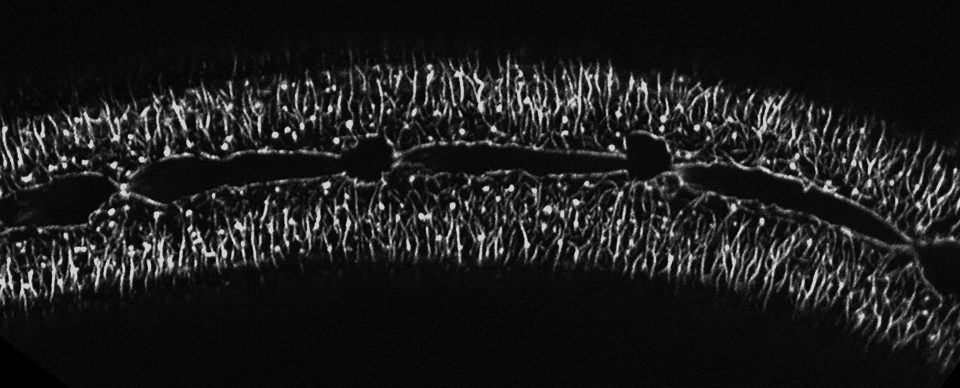
Sophie Katz presented her research at the 20th International C. elegans Conference, held at the University of California, Los Angeles on June 27, 2015. Sophie is a predoctoral research fellow in the Cell and Molecular Biology Training Program, which is supported by the National Institutes of Health (NIH). Sophie studies cytoskeleton dynamics in the epidermis of larvae. Using a genetically […]

Ruhi Mushtaqh Ali presents her work on developmental clocks in C. elegans at the Gordon Conference on Chronobiology held in Girona, Spain from June 27-28, 2015. Her studies include the design and use of fluorescent reporters to detect bouts of microRNA activity in the epidermis of developing worms. Ruhi also shared her research with colleagues at the International C. elegans […]
![]()
We are happy to welcome Graduate student Ruhi Mushtaqh Ali to the Frand lab! Ruhi plans to pursue her interest in developmental timers using the molting cycle of C. elegans as a scientific model.

The Frand lab has received a grant from the National Science Foundation (NSF) to study a distinctive class of matrix proteins linked to the process of molting. About the National Science Foundation National Science Foundation (NSF)

Congratulations to Beatriz A. Osuna 12, who was recently awarded a Graduate Research Fellowship from the National Science Foundation. Ms. Osunas work was consistently recognized during her time at UCLA. She was chosen as a UC LEADS scholar and a CARE fellow, and participated in the UCSF Summer Research Training Program in 2011. She also served as President of the […]

The Frand lab received a research grant from the American Cancer Society (ACS), to study stem cell activation and matrix turnover in developing animals. About the American Cancer Society Research is at the heart of the American Cancer Society’s mission. For more than 60 years, the Society has been finding answers that save lives – from changes in lifestyle to […]

Animal development depends on the smooth integration of cyclical processes and successive events, but the underlying timing mechanisms are not well understood. For example, the cell biological processes and animal behaviors that together comprise the molting cycle of C. elegans are coordinated with successive transitions in the temporal fates of epidermal stem cells, which are programmed by genes in the heterochronic network. […]

Our report on the discovery of a new suite of extracellular matrix (ECM) molecules was published in the latest issue of Molecular Biology of the Cell. The report shows how a set of unconventional extracellular proteins, called the MLTN family, play a critical role in development of the model nematode C. elegans. Related ECM fibrils may contribute to the strength […]






